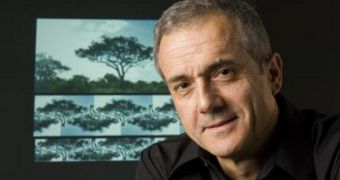The golden ratio is a concept that has been passed down through the generations, and is generally regarded as a set of numbers that can be translated into existence via different constructions. The Ancient Egyptians believed that the ratio was the key to building aesthetically pleasing pyramids and other monuments, whereas Athenians allegedly built their city using it. Many researchers have tried to crack its code over the years, but little actual progress has been recorded until now, e! Science News reports.
The geometric proportion is a “springboard” designed to unify vision, thought and movement under a single law of nature, Adrian Bejan, who is the J. A. Jones distinguished professor of mechanical engineering at Duke University's Pratt School of Engineering, believes. The expert reveals that the golden ratio, also called the divine proportion, is usually represented by a rectangle with a length roughly one and a half times its width. The most commonly cited examples of works of art that feature it are the Parthenon in Athens and Leonardo da Vinci's painting Mona Lisa, which both feature the golden ratio as an underlying principle in their construction.
According to Bejan, it may be that the golden ratio pops up everywhere simply because the eye is capable of interpreting an image featuring it faster than any other. The expert further explains that vision and cognition are connected to each other like a flow system. According to his own theories of such systems, which awarded Bejan the title of one of the most renowned 100 mechanical engineers in the world, they all evolve in time so that they flow more easily. Examples of such systems include everything from cars in traffic to blood in the circulatory systems, and air in lungs.
In a paper published in the early online issue of the International Journal of Design & Nature and Ecodynamics, the expert explains that his new ideas were constructed on another 1996 theory that he proposed, called constructal law. “When you look at what so many people have been drawing and building, you see these proportions everywhere. It is well known that the eyes take in information more efficiently when they scan side-to-side, as opposed to up and down,” Bejan says.
“As animals developed organs for vision, they minimized the danger from ahead and the sides. This has made the overall flow of animals on earth safer and more efficient. The flow of animal mass develops for itself flow channels that are efficient and conducive to survival – straighter, with fewer obstacles and predators,” he adds. Therefore, cognition, vision and locomotion are roughly one and the same thing, the expert says. “Cognition is the name of the constructal evolution of the brain's architecture, every minute and every moment. This is the phenomenon of thinking, knowing, and then thinking again more efficiently. Getting smarter is the constructal law in action,” the expert says.
“It is the oneness of vision, cognition and locomotion as the design of the movement of all animals on earth. The phenomenon of the golden ratio contributes to this understanding the idea that pattern and diversity coexist as integral and necessary features of the evolutionary design of nature,” he concludes.

 14 DAY TRIAL //
14 DAY TRIAL //